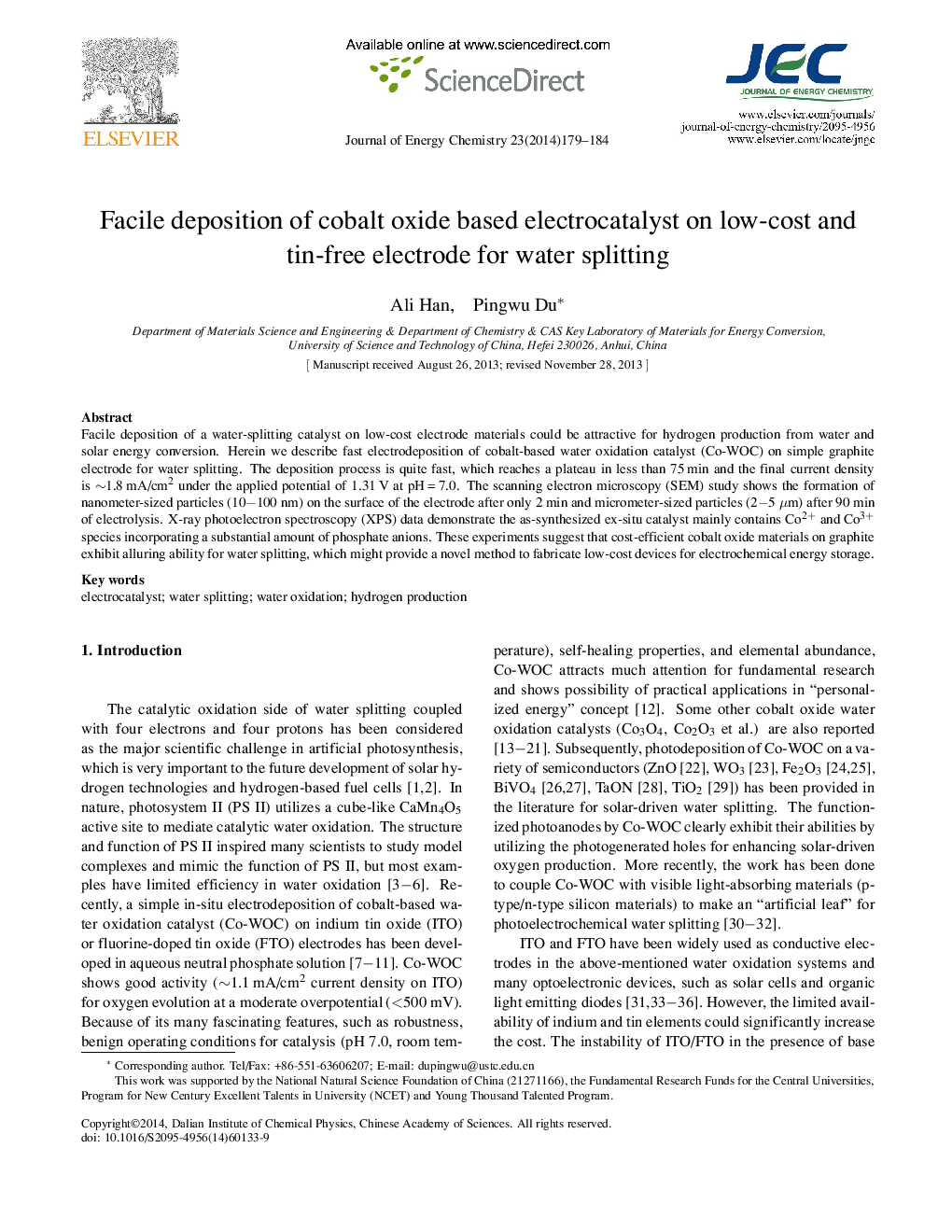| کد مقاله | کد نشریه | سال انتشار | مقاله انگلیسی | نسخه تمام متن |
|---|---|---|---|---|
| 63811 | 48254 | 2014 | 6 صفحه PDF | دانلود رایگان |
Facile deposition of a water-splitting catalyst on low-cost electrode materials could be attractive for hydrogen production from water and solar energy conversion. Herein we describe fast electrodeposition of cobalt-based water oxidation catalyst (Co-WOC) on simple graphite electrode for water splitting. The deposition process is quite fast, which reaches a plateau in less than 75 min and the final current density is ∼1.8 mA/cm2 under the applied potential of 1.31 V at pH = 7.0. The scanning electron microscopy (SEM) study shows the formation of nanometer-sized particles (10–100 nm) on the surface of the electrode after only 2 min and micrometer-sized particles (2–5 μm) after 90 min of electrolysis. X-ray photoelectron spectroscopy (XPS) data demonstrate the as-synthesized ex-situ catalyst mainly contains Co2+ and Co3+ species incorporating a substantial amount of phosphate anions. These experiments suggest that cost-efficient cobalt oxide materials on graphite exhibit alluring ability for water splitting, which might provide a novel method to fabricate low-cost devices for electrochemical energy storage.
Graphical AbstractDirect deposition of cobalt oxide based water oxidation catalyst on low-cost and tin-free graphite materials has been achieved. The assynthesized electrocatalyst shows current density of >3.0 mA/cm2 at about 600 mV overpotential with good durability for catalytic water splitting.Figure optionsDownload as PowerPoint slide
Journal: Journal of Energy Chemistry - Volume 23, Issue 2, March 2014, Pages 179–184
